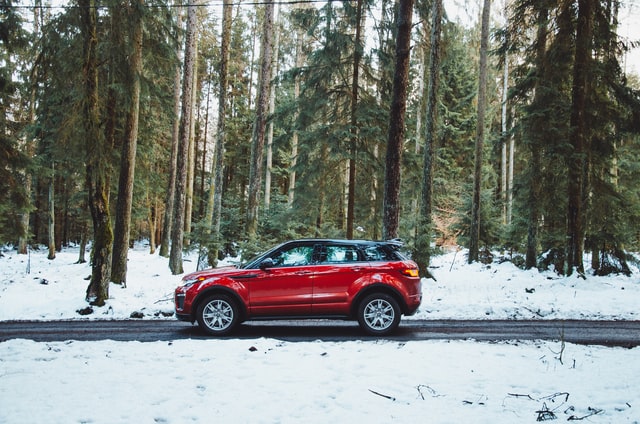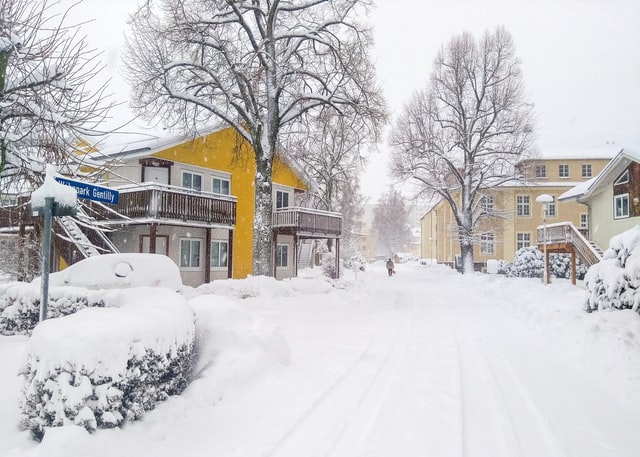How to “winterize” your home & car

Winter is coming, and it brings many cherished family moments, the holiday season, hot chocolate, and so much more. Unfortunately, winter also brings freezing weather and heavy snowfall – which, when it happens unexpectedly (as it tends to in Canada) can spell bad news for our homes and our vehicles. How do we prepare for the winter months? There are a few things you can do to ensuring you are well-prepared for the winter months, especially when it comes to all the freezing rain, high wind, and heavy snowfall. Here are some top tips.
For your car –
Our cars tend to take the biggest hit when it comes to the winter months, especially if we aren’t prepared. Here are some tips for helping ensuring that your car is up to snuff for when the cold hits.
Replace your tires
The best time of year to replace your tires is whenever the average temperature is under 7°C, or roughly mid-November. Depending on your insurance company, you may qualify for an auto discount if you replace your winter tires at the time they recommend. This date will vary from insurance provider to insurance provider, however, so check the wording of your policy or contact your broker.
In Canada, snow tires have a lot of benefits over all-season tires. They last longer and they provide better traction on snow-covered roads.
Check your battery
Your battery may not fare very well in the colder weather. Dropping temperatures may cause the chemical reactions (that are required to generate power) to slow down significantly. Always check your battery to see if it needs replacement or if there is any corrosion that needs cleaning up.
Wiper fluid and wiper blades
Wiper blades may need some maintenance during the winter months if they are freezing or older. Winter-specific blades are available at auto parts stores. You may also wish to replace your wiper fluid with an option that has a lower freezing temperature.
Tire pressure
In especially colder climates, tire pressure will drop. Be sure to assess your tire pressure once per week once the weather gets colder so you can be sure that you have safe traction.
Emergency kit
Putting an emergency kit in your trunk is a good backup plan should things go awry and you are stalled waiting for help for several hours. Include jumper cables, flares, blankets, an ice scraper, water, a flashlight, shovel, and first aid kit.
For your house –

It doesn’t take much time to check your home and winterize it before the cold sets in. t can also save you a lot of money in the long run, and prevent your insurance rates from rising if you have to make an unexpected claim. Here are some tips.
Inspect all window and doors
Inspecting all doors and windows is a good way to start off your home’s winterizing. Any cracks or holes should be sealed immediately. Cover the windows in your basement with shields to optimize insulation and consider installing storm windows during this time.
Check your roof
Your roof may have to do a lot of load-bearing during the next few months so it’s good to ensure it’s up to snuff. Prevent any ice damming during the winter months to ensure your home’s insulation is as good as it can be. Inspect your flashings, clean out your gutters, and replace old or worn shingling. You may even wish to hire a professional to do this for you.
Have a pro inspect your furnace
Have a professional come in and clean the ducts of your furnace, removing any flammable materials surrounding that area. Change out the filter once every 30 days.
Keep your pipes maintained
Frozen and burst pipes can wreak havoc on a home. You may wish to locate your water main in case you have to shut it off. Be sure to drain your garden hoses and turn off your AC’s water shut-off valve. If you leave your house vacant for over 24 hours, be sure to raise your thermostat or even have a housesitter check in on your pipes.
Do a foundation check
Check all the entry points of your house to ensure they are sealed up. Critter who hibernate may find cozy nesting ground in your walls or attic! Block crawlspaces and do a careful inspection. An infestation is not something you want to deal with in the winter.
Conclusion
It doesn’t take a whole lot to prepare your vehicle and your home for winter. Just as much as you would prepare yourself to leave home by donning a heavy coat and mittens, your home and cars need some preparation as well! Cold weather may do some serious damage to your property if you let it, and that can cause your insurance rates to rise if you have to make a claim. Follow these steps and keep a watchful eye during the winter months to avoid any damages or issues.

